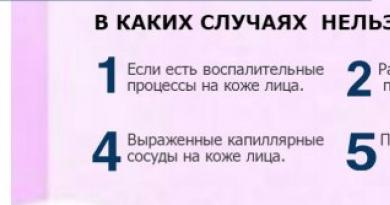If, when purchasing in a retail store, most male buyers do not have problems with choosing a size, then when choosing items of clothing in online catalogs, where foreign items are often displayed, difficulties may arise. Those who are interested in ordering such clothes should know not only their parameters, but also the principles by which different countries ah calculated size chart.
How to take measurements for accurate sizing
Measuring the proportions of your body, which is easy to do yourself, will help you decide on the size. To do this, arm yourself with a centimeter and measure the circumference of your neck (level of the seventh vertebra), chest (at armpit level) and waist and hips. Additionally, measure your shoulders from the back (their width) and arms and legs (their length).
It seems that everything is simple - now that you know the body parameters, you just need to find size table manufacturer of the selected clothing and find your size. But if you want your clothes to not only fit you well, but also fit well, you need to correctly assess your body type, weight and height.
There are 4 types of addition, knowledge of which is necessarily used by good manufacturers when creating collections:
- N-size - corresponds to a standard male figure (height above 162 cm).
- B-size - models for overweight men who have excess abdominal volume and are taller than 162 cm. This indicator is especially important to keep in mind when choosing jeans and trousers.
- S-size - for the figure of a thin, tall man (height above 179 cm).
- U-size - clothes for a standard figure, of small stature, one might say for stocky men (below 162 cm).
Based on these sizes, you can choose ideally fitting items that do not show off those sides that you would like to hide, but decorate your figure.
If you do not find any indications of similar sizes characterizing individual characteristics, do not despair, but try to evaluate these indicators by using the item of clothing that you think fits you best.
For example, take the trousers or jeans you already have, fasten a button on them, measure the distance from the beginning of the belt to the end, and double the result. This is quite enough for trousers. When choosing jeans made from raw fabric, subtract 2.5 cm from the girth of their waistband - then they will sit tighter, forcing you to suck in your stomach and tighten up. Washed or distressed jeans should be chosen even smaller, about one unit from your size. Don’t forget to take into account the fit of the old trousers and whether it matches the fit of the new model.
You also need to evaluate the length of the trouser leg; it is often called Inseam or L (length). It is measured along the seam with inside jeans (from crotch to bottom).
Please note that many models shrink in length after washing, especially jeans made from raw fabric, so if the cut allows, take the option with a margin.
Even if the length of the belt and leg is not reflected anywhere by the manufacturer, in the process of corresponding with the clothing seller you can ask him to measure the model you have chosen and find out how it will look on you.
Just like jeans, you can estimate the size of other clothing items, such as shirts. Having taken a model that suits you perfectly, measure its length (from the bottom of the collar) and the length of the sleeves, collar, cuffs, and take into account the chest circumference.
Selecting outerwear requires a special approach. Take measurements to purchase it, wearing those wardrobe items that you will wear together ( wool sweater, T-shirt, thin turtleneck), and appreciate the same features as a shirt.
If the size turns out to be intermediate, round its value up.
Even the choice of socks and underwear has its own peculiarities. The main thing is not only to take into account all the parameters, but also to study the properties of the fabric, its behavior after washing and wearing.
How can a table of clothing sizes from different countries for men help you determine the correct clothing size?
Trying to choose clothes that are not made in Russia, where the size designations that are familiar to us are used, many men are faced with difficulties in relating various parameters. Some people don’t even know which Russian size suits them best, so first you should decide on these indicators.
The basic size, which does not take into account all the features of the figure, for men is determined by height, chest and waist measurements (girth) - for the upper half of the clothing, and by the hip circumference for the lower half.
Remember that units of measurement various countries are not the same (most often they are centimeters or inches).
Designations of Russian sizes are often similar to international and European ones, but still have several features.
If you need to convert Russian or Belarusian (they are the same) size to European, you need to subtract 2 units from its value. And the sizes used by the UK and the USA are more difficult to calculate: 12 (for the 46th), 13 (for the 48th) are subtracted from the Russian one, and so on in increasing order.
Compliance is also a hot topic Chinese sizes and other generally accepted classifications. Clothes produced in this country are designed for shorter people and thinner builds than in other countries. The situation with wardrobe items from Japan is approximately the same. But the sizes of clothes purchased in Hong Kong and Taiwan correlate well with those in Russia.
You will find the ratio of size grids of several countries in the table below.
| Chest circumference, cm | — | 86.4-96.5 | 96.5-101.6 | 96.5-106.7 | 101.6-116.8 | 116.8-137.2 | 137.2-142.2 |
| Waist circumference, cm | — | 71.1-73.7 | 73.7-83.8 | 76.2-86.4 | 83.8-94 | 94-111.8 | 111.8-119.4 |
|
International classification |
|||||||
|
Sizes Russia/Belarus |
|||||||
|
Sizes Europe |
|||||||
|
UK/US sizes |
|||||||
|
Sizes China |
88 cm -90 cm |
||||||
|
Hong Kong and Taiwan sizes |
|||||||
|
Japan |
36-37 (or S) |
38-39 (or M) |
40-41 (or L) |
42-43 (or LL) |
In European countries, there is a different approach to assessing underwear sizes. What is considered size 46 in Russia, in Germany - 4, in the Czech Republic - 7, in France - 3. Then the sizes increase according to the number.
No matter how much you like the clothes, until you are sure that their sizes match yours, you shouldn’t buy them, because in the photo they can look gorgeous, but in real life It will look absolutely terrible on you. Happy shopping!
European clothing is, of course, an unconditional brand. Not only women of all ages, but also representatives of the stronger sex dream of having an item from a world-famous manufacturer in their wardrobe.
Prada, Dior, Dolce and Gabbana, Versace, Gucci, Armani are brands that need no introduction. And if earlier Russian fashionistas and fashionistas did not even dare to think about owning an item from the collection of these famous fashion houses, then these days the situation has changed radically.
Today you can easily buy clothes, shoes, bags and accessories from these couturiers online or in the popular outlets scattered throughout Europe. Russians highlight visiting such stores as a separate item in their tourist program, because there you can buy a lot of chic things from the most branded manufacturers with discounts of up to 90%!

The most important thing when shopping in Europe is not to get confused about sizes. Knowing your Russian size, you can easily determine your European size. To do this, you just need to subtract the number 6 from ours. For example, 42 European clothing size corresponds to Russian size 48.
The European standard for clothing sizes according to international canons is designated in Latin letters: XS, S, M, L, XL, etc. That is, European clothing size 38 corresponds to international size S.
Some types of women's clothing in Europe may be labeled differently. Dresses, skirts, coats, trousers and suits are one size, and sweaters and blouses are another.
European size chart:
| Size, Russia | Letter designation | Chest circumference, cm | Waist circumference, cm | Hip circumference, cm | Sleeve length, cm | Size, Europe |
| 38 | XXS | 76 | 58 | 82 | 58/60 | 32 |
| 40 | XS | 80 | 62 | 86 | 59/61 | 34 |
| 42 | S | 84 | 66 | 92 | 59/61 | 36 |
| 44 | M | 88 | 70 | 96 | 60/62 | 38 |
| 46 | M | 92 | 74 | 100 | 60/62 | 40 |
| 48 | L | 96 | 78 | 104 | 60/62 | 42 |
| 50 | L | 100 | 82 | 108 | 61/63 | 44 |
| 52 | XL | 104 | 86 | 112 | 61/63 | 46 |
| 54 | XXL | 108 | 90 | 116 | 61/63 | 48 |
| 56 | XXL | 112 | 94 | 120 | 6163 | 50 |
| 58 | XXXL | 116 | 98 | 124 | 62/64 | 52 |
| 60 | 4XL | 120 | 102 | 128 | 62/64 | 54 |
| 62 | 4XL | 124 | 106 | 132 | 62/65 | 56 |
| 64 | 4XL | 128 | 110 | 136 | 62/65 | 58 |
| 66 | 5XL | 132 | 114 | 140 | 62/65 | 60 |
| 68 | 5XL | 136 | 118 | 144 | 62/65 | 62 |
| 70 | 5XL | 140 | 122 | 48 | 62/65 | 64 |
But European clothing sizes for men are absolutely identical to Russian ones, so men are very lucky: they can make purchases in Europe without problems.
If you think that you know for sure which countries have European clothing sizes, we hasten to warn you: the European size chart does not apply in all European countries. For example, Germany and Italy have their own sizing system.
So be careful, fashionistas and fashionistas. And happy shopping!
When buying clothes, shoes or headwear, the main thing is that the size indicated on it matches your parameters. How can we figure out the sizes on the tag if the clothes arrive on our shelves from different countries, for example, from America or Europe?
There is no single standard in the world, only in Europe there has been an attempt to introduce a common EN standard. But the pan-European standard is not always indicated on the label. But what about clothes from the USA or China: their sizing parameters differ sharply, and American sizes are sometimes indicated in inches. Even in centimeters we cannot always determine what size we need.
The sizing system adopted in Russia has existed for a long time, but European and American designations do not coincide with it. How can buyers avoid making mistakes in such cases? It’s even more difficult for people ordering clothes from an online store.
Revealing the meaning of unfamiliar units
To make it easier to choose the right size for the dress or trousers you like, sometimes it is enough to convert unknown units of measurement into familiar ones. The following information will be very useful for many:
- 1 inch is equal to 2.54 centimeters;
- 1 centimeter corresponds to 0.39 inches.
In the same way, you can decipher any unfamiliar parameters that may appear on the label of an item brought from a distant country. Let's begin to understand the sizes existing in the world.
American major
Unlike Russian and European ones, American sizes are represented by a ruler from 0 to 22. Many have already learned to distinguish their international analogue in letter designation. There are six main sizes:
Extra small - XS;
Small - S;
Medium - M;
Large - L;
Extra large - XL;
Larger than extra large - XXL.
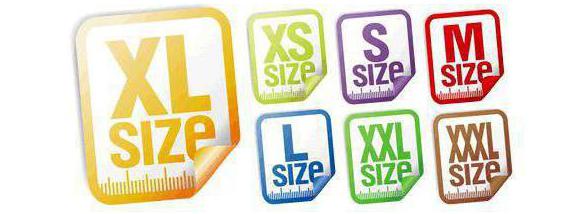
The fuller and larger the person, the larger the ruler parameter required for him. For this case, American clothing sizes are combined into XL size groups. The number of X's in front of the letter L shows the size (than more letters, the larger the item), there can be a maximum of 8 pieces. Accordingly, sizes for large people will be special: from 24 to 28 or more.
Translation rule
Many sellers, using existing patterns, convert American sizes to Russian and put them on the label. This is done to make it easier for customers to select products, since few people can navigate the full variety of dimensions. How to get a domestic one from an American parameter? They take a foreign size 46, subtract 10 from it, and you get a Russian size 36. It's very simple. But this only applies men's clothing. To determine compliance American sizes It is better for Russians or Europeans to use special tables. But you should know: when purchasing any items from the USA, especially through online stores, be sure to check the parameters, sometimes they differ. If possible, ask for specific measurements - a seller concerned about his reputation will most likely provide them to you.
Women's sizes
To determine American women's clothing sizes you need to subtract the number 34 from Russian. For example, the 48th Russian will correspond to the 14th American. European sizes obtained by subtracting the number 6 from the Russians. Take the 46 indicated on the label, minus 6 and get the 40th European.
Women's outerwear in Russian sizes is easily translated into American designations. Just use the hint below:
Russian/US/International/Europe Size:
- 40/6/XS/34;
- 42/8/XS/36;
- 44/10/S/38;
- 46/12/M/40;
- 48/14/M/42;
- 50/16/L/44;
- 52/18/XL/46;
- 54/20/XL/48;
- 56/22/XXL/50.
On women's clothing American designations may include the letters P or L. They mean:
P - clothes for women up to 165 centimeters tall,
L - for tall ones, over 182 centimeters.
American clothing sizes for adult women are marked as even, odd numbers are used for young teenage girls.
They will match Russian sizes(American/Russian):
- 0(XXS)/38;
- 1(XS)/40;
- 3(S)/42;
- 5(S)/44;
- 7(M)/46;
- 9(L)/48;
- 11(L)/50.
In order not to make a mistake, when choosing clothes you need to know the girth of the bust, waist and chest - these are the best parameters for correctly determining the desired model. 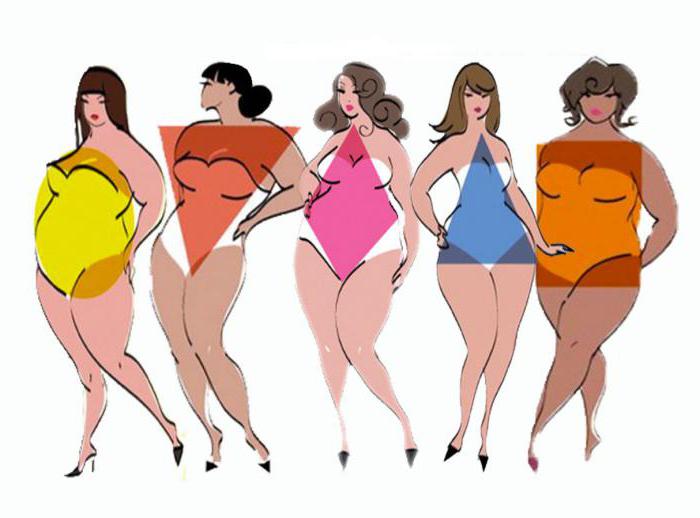
Men's sizes
In a similar way, you can translate American men's markings into Russian for the convenience of selecting trousers and shirts. For outerwear, the correspondence will be as follows (Russian size/US size):
- 46-48/36-38;
- 48-50/38-40;
- 50-52/40-42;
- 52-54/42-44;
- 54-56/56-58.
There is a pattern of difference: to convert American sizes to Russian, it is enough to subtract the number 10 from our designation or add the same amount to the American one. For a more accurate selection of clothes, you need to know the waist and chest circumference, and when choosing a shirt, also the neck circumference.
The sizes of men's shirts (shirts) from American to Russian are translated as follows: size 37 corresponds to 14.5 inches, size 38 corresponds to 15 inches. Here again you can use the calculator.
Shirt size 39-40 translated into American will be 15 1/2 inches, each subsequent parameter increases by 0.5 inches. The international designation will correspond, starting from 37 to 38 - S, 39-40 - M, 41-43 - L, 44 - XL, 45 - XXL. 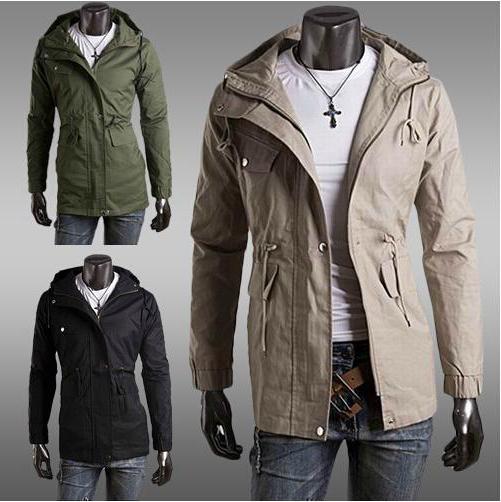 On men's clothing There may be letters, what do they mean? The answer is simple - tags for men under 170 centimeters tall are marked with the designation S. For average heights from 170 to 182 centimeters, they are marked with R. Clothes for tall men above 182 centimeters are marked with the letter L. Outerwear for people taller than 190 centimeters it is marked with the letters XL.
On men's clothing There may be letters, what do they mean? The answer is simple - tags for men under 170 centimeters tall are marked with the designation S. For average heights from 170 to 182 centimeters, they are marked with R. Clothes for tall men above 182 centimeters are marked with the letter L. Outerwear for people taller than 190 centimeters it is marked with the letters XL.
Children's sizes
There should be no problems with buying clothes for children under two years old: American children's sizes are designated in an original way - by age.
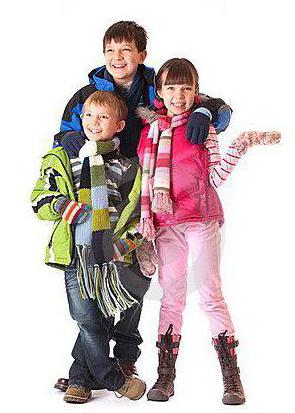 But not all children correspond to such a system for determining sizes, since the development of each follows an individual trend. Therefore, to make it easier to choose clothes, the child’s height measurements are given in centimeters. The American size chart for children under two years old will look like this (size/height, cm):
But not all children correspond to such a system for determining sizes, since the development of each follows an individual trend. Therefore, to make it easier to choose clothes, the child’s height measurements are given in centimeters. The American size chart for children under two years old will look like this (size/height, cm):
- new/43-49;
- 3 months/50-58;
- 6 months/59-66;
- 9 months/67-72;
- 12 months/73-76;
- 18 months/77-81;
- 24 months/82-89.
For older children (up to eight years old inclusive), the size system also depends on age and height. This size group is conventionally called kids. Starts with size 2T:
- 2T corresponds to height 92-94 cm;
- 3T - height 98-100 cm;
- 4T - height 104-106 cm;
- 5 - height 108-110 cm;
- 6 - height 116-118 cm;
- 7 - height 120-122 cm;
- 8 - height 126-128 cm.
For children over 8 years old, other sizes are provided; starting from this age, there is a division into boys and girls. This series is called Juniors, it corresponds to ages from 8 to 14 years. These sizes take into account not only the height, but also the volume of the children’s figure.



